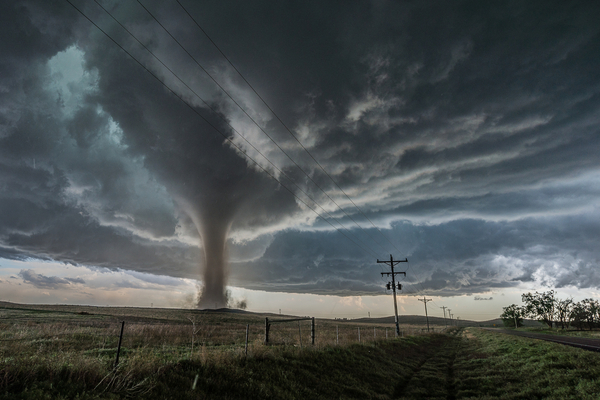Over the weekend, powerful storms and at least one tornado pummeled the southern United States, leaving 26 dead and more still missing. The confirmed tornado touched down in Mississippi, where the damage and death toll had been most severe. State agencies led the search for victims, and FEMA arrived to help with the recovery.
Thousands of homes and businesses across the region were still without power as of Sunday afternoon, according to PowerOutage.us. Thousands more lost service before crews started making repairs.
While tornadoes can form at any time throughout the year, there is a distinct seasonal peak in tornadic activity, and it usually begins right about now. Long-term weather records show April, May and June are the most active three months for tornadoes in the U.S.
According to Fox Weather, between 1991 and 2020, an average of 1,333 twisters were documented across the nation each year, of which 54% occurred between April and June. May is historically the most active month for tornadoes, averaging 294 twisters yearly. That’s followed by April and June, each with an average of 212 tornadoes.
Keep in mind, these are just averages based on a 30-year period, and the weather doesn’t always follow what’s considered average.
Different weather patterns that set up each spring can cause the number of twisters between April and June to be significantly greater or much fewer than the 718 tornadoes that are typical during those three months. Tornado outbreaks during the spring are most common when a strong southward dip in the jet stream punches into the Plains or Midwest and warm, humid air from the Gulf of Mexico surges northward out ahead of it at the surface.
A stronger jet stream can be fuel for severe weather, adding the spin and energy needed in the atmosphere for thunderstorms to grow and intensify, potentially developing into supercells that could produce tornadoes if wind shear – the change in wind speed and/or direction with height – near the surface is particularly strong.
By the spring, the jet stream is migrating northward out of the South and setting up more frequently over the Plains and Midwest as it retreats toward the Canadian border for the summer. That’s why the potential for tornadoes increases in “Tornado Alley” during the spring while the risk of twisters decreases for the southern U.S.
Adding to spring’s violent reputation is that it’s also the most favorable time of year for EF-5 twisters, the highest rating on the Enhanced Fujita Scale. EF-5 tornadoes are among the rarest cyclones on the planet. In the U.S., there have been only 59 EF-5/F-5 twisters since 1950, according to NOAA’s Storm Prediction Center. That works out to an average of less than one EF-5 tornado in America each year.
According to Fox Weather, some years have reported multiple tornadoes of this intensity. At the same time, there have also been multiyear stretches without a single “5-rated” twister, such as the current record-long streak that’s approaching 10 years. The nation’s last EF-5 tornado struck Moore, Oklahoma, on May 20, 2013. All but 10 of the nation’s documented EF-5/F-5 tornadoes have occurred in either April, May or June – the same three-month period with the highest frequency of tornadic activity.
Now is the time to prepare for the potential uptick in the number of twisters in the months ahead. Here is a list of tips to guide you through the preparations.
—
Photo Credit: Cammie Czuchnicki / Shutterstock.com
